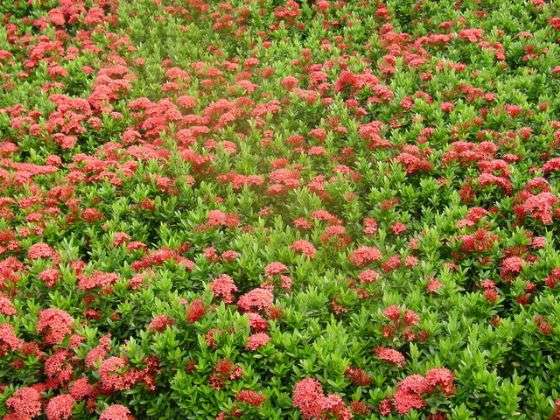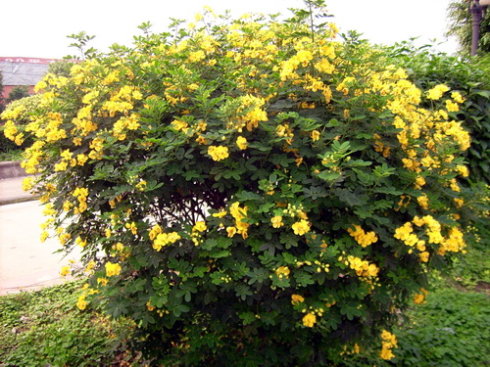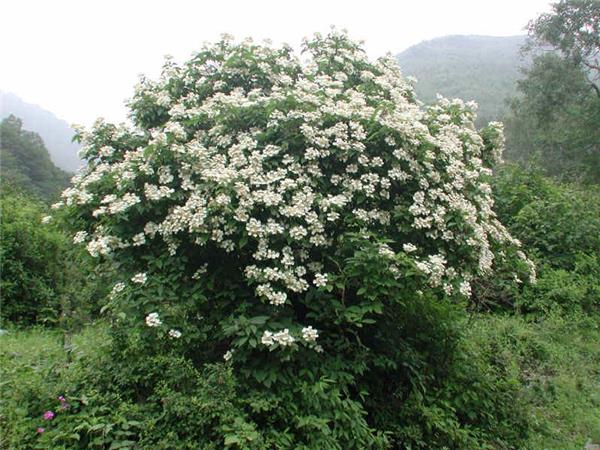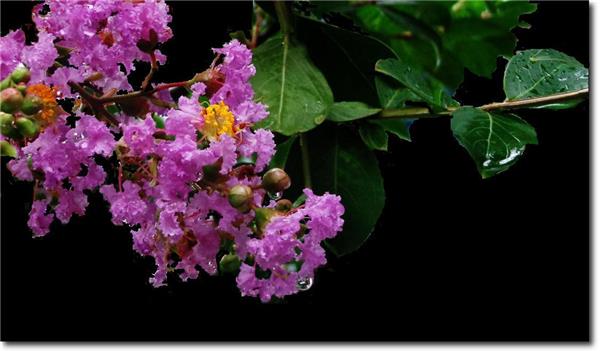[common flowering shrub] how to improve the survival rate of flowering shrub
Generally speaking, flowering shrubs are relatively easy to survive, but if they are not cultured in place, they will form a scene of scattered plant types, which increases the difficulty of pruning, so we should pay a little attention to breeding.

How to improve the Survival rate of flowering shrubs
1. It is better to plant trees sooner rather than later in spring. Now we advocate "top slurry" afforestation, and we can dig holes for planting since early March.
two。 The seedlings with strong adaptability should be selected as far as possible, and the tree species suitable for local soil growth conditions should be selected on the premise of suitable land and suitable tree planting.
3. The quality of seedlings directly affects the survival rate of afforestation. Some people only pay attention to its price when selecting seedlings, resulting in a low survival rate in the later stage, but a higher cost. Therefore, it is better to choose large seedlings with strong growth, full Lignification, no diseases and insect pests, uniform specifications, large soil balls, intact roots, many fibrous roots and sturdy growth.
4. When planting, the planting technology of "three buries, two steps and one lifting seedling" is adopted to highlight the "three big and one solid", that is, big pit, big seedling, flood and tamping. Put the seedlings in the center of the pit and straighten the roots. When filling the soil, the bottom of the pit should be filled with topsoil with organic fertilizer mixed with a small amount of quick-acting bacterial fertilizer. When the soil is about halfway up, lift the seedlings up slightly, then step on the soil and fill it until the pit is full, then step on it, finally pour enough water, and cover the surface of the pit with a layer of loose soil to prevent soil moisture from evaporating.

5. Planting seedlings, one-third planting and seven-point maintenance, maintenance is very important for the survival rate of planting.
6. Pruning: young trees grow exuberantly, mainly plastic surgery, and should be cut lightly. Erect branches should be strictly controlled, and the upper buds of oblique branches should be peeled off when they are cut in winter to prevent the growth of erect branches. All disease and insect branches, dry and withered branches, artificially damaged branches, overgrown branches, etc., shall be cut off by thinning. The erect branches of tufted flowering shrubs are selected to pick the hearts of the strong ones to promote their early flowering. Adult trees should make full use of three-dimensional space to promote more flowering. When pruning in the dormant period, cut short below the autumn shoot, at the same time, select some roots and tillers year by year, and remove some old branches to ensure the continuous renewal of branches and maintain plump plant shape. The old and weak trees are mainly rejuvenated and rejuvenated, using the method of heavy truncation to concentrate nutrition on a small number of axillary buds, sprout strong branches, and timely delete weak branches, disease and insect branches and dead branches. According to the pruning period, deciduous shrubs can be divided into winter pruning (dormant pruning) and summer pruning (post-anthesis pruning). Winter pruning is usually carried out during the dormant period. Summer pruning is carried out behind the flower in order to inhibit vegetative growth, increase the light of the whole plant, promote flower bud differentiation and ensure flowering in the coming year. Pruning in summer should be done sooner rather than later, which is beneficial to control the growth of long branches. If the pruning time is a little later, the upright shoot has already been formed. If space conditions permit, the method of coring can be used to produce secondary branches and increase the number of flowering branches.

Common flowering shrubs
Red leaf Berberis: strong adaptability. Xiyang, semi-overcast, drought-resistant, suitable for fertile, well-drained soil. Cold-resistant, but not afraid of heat and heat. Strong sprouting and resistant to pruning.
Golden leaf privet: like warmth, slightly resistant to shade, but not resistant to cold. Strong sprouting ability and wide range of adaptation. It has the function of dust retention and anti-smoke, can absorb sulfur dioxide, adapt to factories, mines and urban greening, and is one of the rare evergreen broad-leaved tree species in the north.
Purple leaf plum: like sunshine, like warm and humid climate, have a certain ability to resist drought. Strong adaptability to soil, not resistant to drought, more resistant to water and moisture, not resistant to alkali. The sandy gravel soil is better, the clayey soil can also grow, the root system is shallower, and the germination ability is better.
Elm leaf plum: sexual light, cold tolerance, drought tolerance, can also adapt to mild loessial soil, not resistant to waterlogging.
Purple leaf dwarf cherry: purple leaf dwarf cherry has strong adaptability and grows well on well drained, fertile sandy soil, sandy loam and light clay. Sexual like light, strong cold resistance, strong disease resistance, resistance to pruning, semi-overcast conditions can still remain purplish red.
Red leaf green peach: like light, drought tolerance, requires fertile soil, good drainage. During the growing period, it is necessary to strengthen management, fertilization, irrigation, weeding and pest control.
Crape myrtle: like light, slightly resistant to shade; like warm climate, strong cold resistance; like fertile, moist and well-drained calcareous soil, drought-resistant, afraid of waterlogging. The sprouting vegetable is strong, the growth is slow, the life span is long.

There are many kinds of flowering shrubs to choose from, of course, not only those introduced above, but now some families with courtyards will also plant some flowering shrubs at home, which can not only play the role of self-cultivation, but also add a lot of color to the courtyard.
Now some families with courtyards will also plant some flowers and shrubs at home, which can not only play the role of self-cultivation, but also add a lot of color to the courtyard.
Related
- Wuhan Hospital Iron Tree Blooming Result Was Instantly Frightened by the Gardener Master
- Which variety of camellia is the most fragrant and best? Which one do you like best?
- What is the small blue coat, the breeding methods and matters needing attention of the succulent plant
- Dormancy time and maintenance management of succulent plants during dormancy
- Minas succulent how to raise, Minas succulent plant pictures
- What are the varieties of winter succulent plants
- How to raise succulent plants in twelve rolls? let's take a look at some experience of breeding twelve rolls.
- Attention should be paid to water control for succulent plants during dormant period (winter and summer)
- Watering experience of twelve rolls of succulent plants
- Techniques for fertilizing succulent plants. An article will let you know how to fertilize succulent plants.



